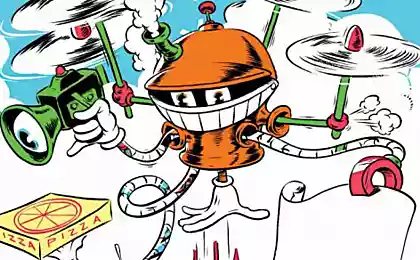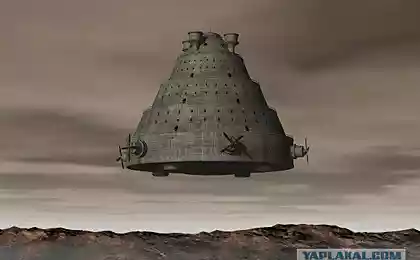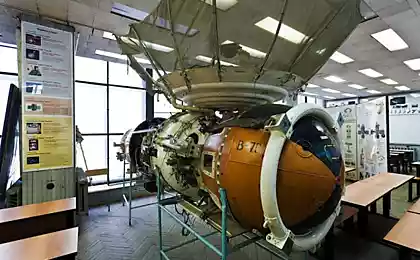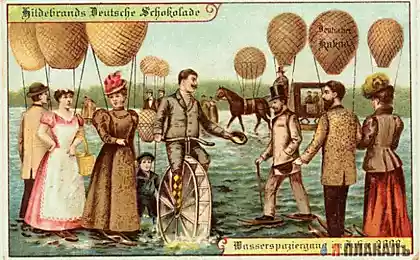2264
The strangest aircraft
The invention of aircraft - one of the greatest events in the history of mankind. Aviation and aeronautics industries have always been considered that challenge insurmountable problems and offer radically new solutions. But the aircraft listed below may surprise even the most experienced.
10. Convair V2 Sea Dart

Work pilots are not always limited to just a plane. A control fighter that can land on water in the middle of the ocean, the pilot turns even in the driver's giant water bike.
Convair Sea Dart - an experimental American fighter designed in 1951 as a prototype for a supersonic seaplane.
He was fitted with a waterproof shell and two hydrofoils. Convair Sea Dart was discontinued after an accident with fatal consequences.
But before that, under the control of Sam Shannon, this aircraft became the first (and only today) seaplane, broke the sound barrier.
9. Goodyear Inflatoplane
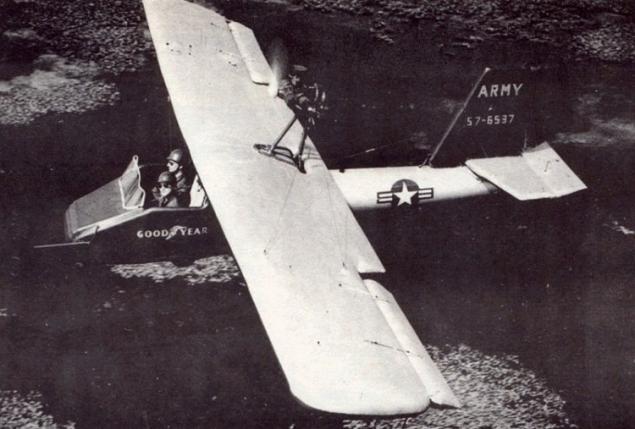
When the largest tire manufacturer is trying to do aviation, remains only expect something unusual.
In 1959, Goodyear Tire extraordinary to meet the requirements of the market supply of compact aircraft. Inflatable aircraft with open cockpit pilot was completely made of rubber, with the exception of the motor and electrical control cables.
The aircraft safely fit in a box of one meter in length and easily inflated with a normal bicycle pump. This machine has made a real splash aerodynamic once flew into the air.
Unfortunately, the company failed to convince the military to take the aircraft into service when it turned out that it's easy to knock down using bullets or even a good slingshot.
8. The aircraft NASA A1 Pivot-Wing
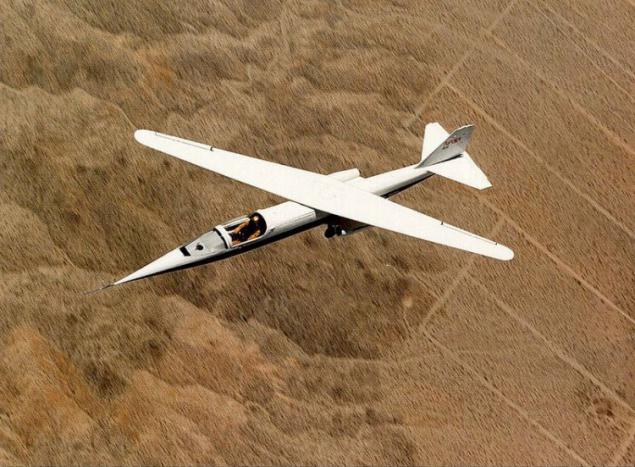
With the advent of the airplane NASA A1 Pivot-Wing standard strangeness of aircraft has been raised to a new level.
The aircraft was developed in the early 1980s to test the theory of rotating wing. He had long wings that rotate at an angle until the tip of the right wing is not subjected to parallel the cockpit.
This was an unusual and innovative design has been hidden attempt to neutralize the influence of turbulence and increased streamlining.
The plane was surprisingly good number of tests, but the results were not so impressive to approve its mass production. However, modern UAVs are designed based on this model.
7. Vought V-173
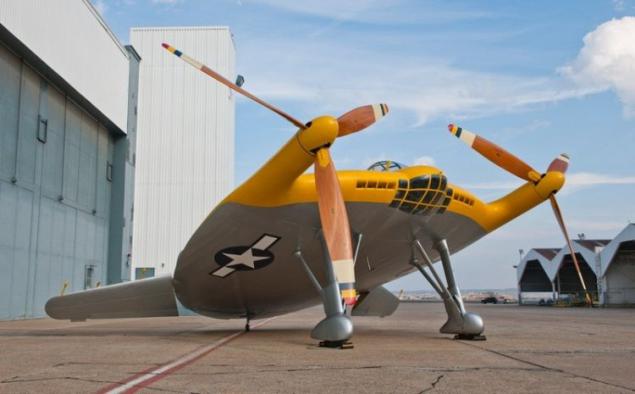
Vought V-173 was developed in 1942 as a prototype vessel with vertical takeoff and landing, as well as the ability to intercept enemy fighters directly from an aircraft carrier.
A strange design of the first test pilots nicknamed him "flying pancake". He had a fuselage almost right round, which also served as the wings for the aircraft.
Two engine supports a huge propellers that do not touch the ground only through exaggerated size rack chassis and power supply system located at the ends of the wings (as opposed to all existing planes).
Limited demand and accident decided the fate of this project, but it served as the ancestor for the famous jet VTOL Herrier (Harrier Jet).
6. Bell P -39 Aircobra
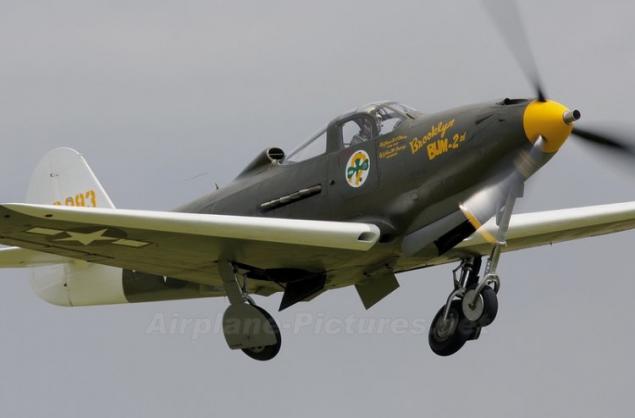
Sometimes the experts need to be engaged in what they are well versed.
During the Second World War, the company Bell Helicopters has created a powerful, super-maneuverable fighter with excellent opportunities to attack both ground and air targets.
Most aircraft engines are located in the front of the cockpit. However, as a company manufacturing helicopters, Bell created the hull of the vessel with the engine behind this cabin.
This design provides extraordinary power plane, and a long shaft rotating propeller in front. But the construction of housing around the power supply, like a helicopter, has led to an unusual center of gravity. Therefore, some of them even broke the enemy without firing a shot
And yet, with this air "Cobra" Soviet troops were shot down more enemy aircraft than with any other US aircraft produced by Land - Lease.
5. SR 71 "Blackbird»

Even before the era of universal satellite technology was created by SR 71 "Blackbird" - a first-class reconnaissance aircraft with unprecedented speed, strength and ability to reach the stratosphere
Terrible, almost alien, this aircraft had just fantastic abilities. But by a strange idea of special leaky fuel tanks leaked explosive jet fuel, while heat (t = 482 ° C), caused by the friction does not seal them.
When the airplane has reached a height of about 10,000 meters and a speed of almost 5,000 km / h, the cab surface began to glow bright red. Terrific view from the outside was no better inside, where in the cabin with asbestos insulation was the pilot.
Even the canopy is heated to a temperature of 300 ° C, while at landing the pilot had to wait more than an hour to exit from the cab of his legs are not melted.
4. Convair Pogo
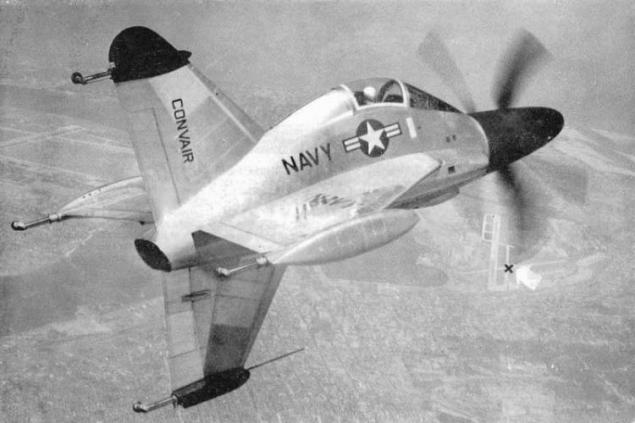
Grumman X23 or "Pogo" represents a radical departure from the norms of aircraft engineering: from simple eccentricity to the point of absurdity. The hull was built almost like a conventional aircraft, with the exception of the rotor attached to the nose cone, which rises vertically into the air plane.
Unlike most aircraft vertical takeoff and landing, Pogo nose flew up like a rocket with wheels attached to its tail keel. Canopy pilot was constructed in 90 degrees outside, which is why the pilot had to lie perpendicular to the ground when the machine is lifted into the air.
Then, after alignment of the flight, "Pogo" continued flying as normal planes. This vessel has been a series of successful tests, but like all the "strange" projects he did not receive further development.
3. McDonnell Douglas X-15

Model X-15 is a more old project, but it was such an unusual and significant breakthrough in aircraft that he remains unsurpassed to this day.
First trial took place in 1959. Aircraft missile X-15 was 15, 5 meters long, three-meter with tiny wings on both sides. In a series of tests the aircraft lift to a height of 30, 5 miles, and two of them were counted as space flight.
During its passage through the atmosphere, the speed of six times the speed of sound. Airframe was coated nickel alloy similar in composition to that found in meteorites. This allowed the aircraft did not burn when entering the Earth's atmosphere.
Great weight and high power X-15 formed the basis for describing the characteristics of extreme aircraft.
2. Blohm und Voss BV 141
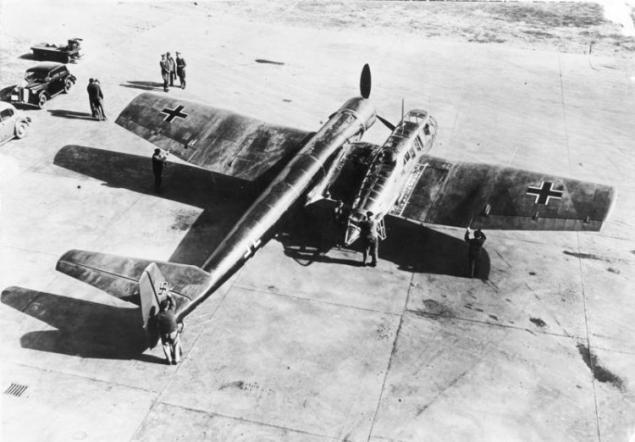
In nature, symmetry is important in everything - from the eyes and to the wings. In reverse engineering principles, inspired by the rules of nature, this axiom is equally valid for engines, fin and tail of the aircraft.
But during the Second World War, the German Dornier aircraft manufacturers of the company created a reconnaissance aircraft and light bomber with only one wing, tail boom with the engine on one side and cockpit right behind them.
This design, with significant deviations from the norm may not be reliable, but, nevertheless, the location of the cab on the right side of the propeller counteracts the torque and helps the aircraft to fly straight.
This strange aircraft is not only off the ground, but also served as the inspiration for the design of modern sport aircraft with a similar design.
1. Caproni Ca.60 Noviplano
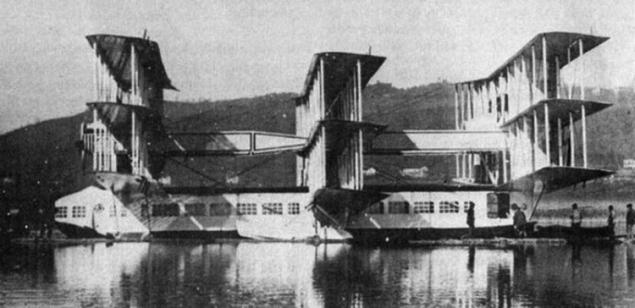
Imagine a houseboat combined with the aircraft. This idea was the basis of the project Caproni Ca.60 Noviplano. Mahina, established in 1920, has changed all existing standards for evaluating aircraft with several wings. So much so that the Red Fokker Richthofen (Richtofen's Red Fokker) would have looked just mediocre.
This huge floating aircraft (21, 5 m in length and 55 tons weight) was to be the first transatlantic aircraft in aviation history. Borrowing a concept from the theory that a sufficient number of wings can make fly anything to the body in the form of a ship's three wings were attached in front, three in the middle and a third set of wings behind - instead of a tail.
This strange unearthly machine can be described as a triple triplane. Nothing like this has ever been built.
Take-off was not a problem for this aircraft, but the first flight ended in disaster when the plane gained altitude of 18 meters. Kaprioni said that to fix it, but the wreckage was burned that night.
10. Convair V2 Sea Dart

Work pilots are not always limited to just a plane. A control fighter that can land on water in the middle of the ocean, the pilot turns even in the driver's giant water bike.
Convair Sea Dart - an experimental American fighter designed in 1951 as a prototype for a supersonic seaplane.
He was fitted with a waterproof shell and two hydrofoils. Convair Sea Dart was discontinued after an accident with fatal consequences.
But before that, under the control of Sam Shannon, this aircraft became the first (and only today) seaplane, broke the sound barrier.
9. Goodyear Inflatoplane

When the largest tire manufacturer is trying to do aviation, remains only expect something unusual.
In 1959, Goodyear Tire extraordinary to meet the requirements of the market supply of compact aircraft. Inflatable aircraft with open cockpit pilot was completely made of rubber, with the exception of the motor and electrical control cables.
The aircraft safely fit in a box of one meter in length and easily inflated with a normal bicycle pump. This machine has made a real splash aerodynamic once flew into the air.
Unfortunately, the company failed to convince the military to take the aircraft into service when it turned out that it's easy to knock down using bullets or even a good slingshot.
8. The aircraft NASA A1 Pivot-Wing

With the advent of the airplane NASA A1 Pivot-Wing standard strangeness of aircraft has been raised to a new level.
The aircraft was developed in the early 1980s to test the theory of rotating wing. He had long wings that rotate at an angle until the tip of the right wing is not subjected to parallel the cockpit.
This was an unusual and innovative design has been hidden attempt to neutralize the influence of turbulence and increased streamlining.
The plane was surprisingly good number of tests, but the results were not so impressive to approve its mass production. However, modern UAVs are designed based on this model.
7. Vought V-173

Vought V-173 was developed in 1942 as a prototype vessel with vertical takeoff and landing, as well as the ability to intercept enemy fighters directly from an aircraft carrier.
A strange design of the first test pilots nicknamed him "flying pancake". He had a fuselage almost right round, which also served as the wings for the aircraft.
Two engine supports a huge propellers that do not touch the ground only through exaggerated size rack chassis and power supply system located at the ends of the wings (as opposed to all existing planes).
Limited demand and accident decided the fate of this project, but it served as the ancestor for the famous jet VTOL Herrier (Harrier Jet).
6. Bell P -39 Aircobra

Sometimes the experts need to be engaged in what they are well versed.
During the Second World War, the company Bell Helicopters has created a powerful, super-maneuverable fighter with excellent opportunities to attack both ground and air targets.
Most aircraft engines are located in the front of the cockpit. However, as a company manufacturing helicopters, Bell created the hull of the vessel with the engine behind this cabin.
This design provides extraordinary power plane, and a long shaft rotating propeller in front. But the construction of housing around the power supply, like a helicopter, has led to an unusual center of gravity. Therefore, some of them even broke the enemy without firing a shot
And yet, with this air "Cobra" Soviet troops were shot down more enemy aircraft than with any other US aircraft produced by Land - Lease.
5. SR 71 "Blackbird»

Even before the era of universal satellite technology was created by SR 71 "Blackbird" - a first-class reconnaissance aircraft with unprecedented speed, strength and ability to reach the stratosphere
Terrible, almost alien, this aircraft had just fantastic abilities. But by a strange idea of special leaky fuel tanks leaked explosive jet fuel, while heat (t = 482 ° C), caused by the friction does not seal them.
When the airplane has reached a height of about 10,000 meters and a speed of almost 5,000 km / h, the cab surface began to glow bright red. Terrific view from the outside was no better inside, where in the cabin with asbestos insulation was the pilot.
Even the canopy is heated to a temperature of 300 ° C, while at landing the pilot had to wait more than an hour to exit from the cab of his legs are not melted.
4. Convair Pogo

Grumman X23 or "Pogo" represents a radical departure from the norms of aircraft engineering: from simple eccentricity to the point of absurdity. The hull was built almost like a conventional aircraft, with the exception of the rotor attached to the nose cone, which rises vertically into the air plane.
Unlike most aircraft vertical takeoff and landing, Pogo nose flew up like a rocket with wheels attached to its tail keel. Canopy pilot was constructed in 90 degrees outside, which is why the pilot had to lie perpendicular to the ground when the machine is lifted into the air.
Then, after alignment of the flight, "Pogo" continued flying as normal planes. This vessel has been a series of successful tests, but like all the "strange" projects he did not receive further development.
3. McDonnell Douglas X-15

Model X-15 is a more old project, but it was such an unusual and significant breakthrough in aircraft that he remains unsurpassed to this day.
First trial took place in 1959. Aircraft missile X-15 was 15, 5 meters long, three-meter with tiny wings on both sides. In a series of tests the aircraft lift to a height of 30, 5 miles, and two of them were counted as space flight.
During its passage through the atmosphere, the speed of six times the speed of sound. Airframe was coated nickel alloy similar in composition to that found in meteorites. This allowed the aircraft did not burn when entering the Earth's atmosphere.
Great weight and high power X-15 formed the basis for describing the characteristics of extreme aircraft.
2. Blohm und Voss BV 141

In nature, symmetry is important in everything - from the eyes and to the wings. In reverse engineering principles, inspired by the rules of nature, this axiom is equally valid for engines, fin and tail of the aircraft.
But during the Second World War, the German Dornier aircraft manufacturers of the company created a reconnaissance aircraft and light bomber with only one wing, tail boom with the engine on one side and cockpit right behind them.
This design, with significant deviations from the norm may not be reliable, but, nevertheless, the location of the cab on the right side of the propeller counteracts the torque and helps the aircraft to fly straight.
This strange aircraft is not only off the ground, but also served as the inspiration for the design of modern sport aircraft with a similar design.
1. Caproni Ca.60 Noviplano

Imagine a houseboat combined with the aircraft. This idea was the basis of the project Caproni Ca.60 Noviplano. Mahina, established in 1920, has changed all existing standards for evaluating aircraft with several wings. So much so that the Red Fokker Richthofen (Richtofen's Red Fokker) would have looked just mediocre.
This huge floating aircraft (21, 5 m in length and 55 tons weight) was to be the first transatlantic aircraft in aviation history. Borrowing a concept from the theory that a sufficient number of wings can make fly anything to the body in the form of a ship's three wings were attached in front, three in the middle and a third set of wings behind - instead of a tail.
This strange unearthly machine can be described as a triple triplane. Nothing like this has ever been built.
Take-off was not a problem for this aircraft, but the first flight ended in disaster when the plane gained altitude of 18 meters. Kaprioni said that to fix it, but the wreckage was burned that night.







